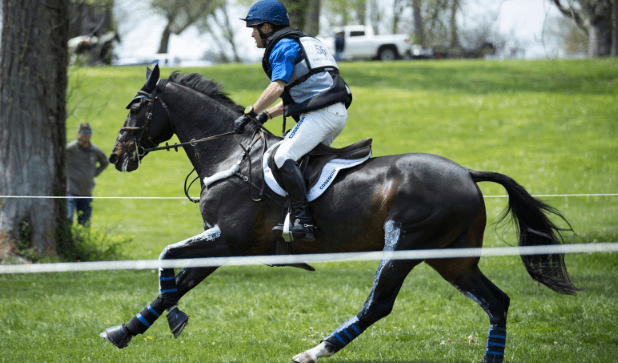How to Prevent Injuries in Cross-Country Riding:

Cross-country riding is an exhilarating sport that combines speed, skill, and the thrill of navigating natural terrain. However, the very elements that make it exciting also introduce risks, making injury prevention a critical aspect of the sport. This comprehensive guide outlines practical steps riders can take to minimize risks and enjoy a safer riding experience.
Understanding Cross-Country Riding
Cross-country riding is a demanding equestrian discipline that requires both horse and rider to be in excellent physical condition. The sport involves riding over a course of natural terrain, featuring obstacles like logs, water, and ditches. Injuries can range from minor bruises to more serious falls, making it essential to adopt a proactive approach to safety.
Pre-Ride Preparations
A thorough warm-up for both rider and horse can significantly reduce the risk of injury. Ensuring all equipment, especially safety gear, is in good condition is equally important. A helmet, body protector, and appropriate footwear are non-negotiable elements of a rider’s gear.
Choosing the Right Gear
Selecting the right safety gear is paramount. A well-fitting helmet can prevent head injuries, while body protectors and safety vests offer protection against falls. Comfortable, durable footwear and gloves enhance grip and control, further reducing the risk of accidents.
Horse Preparation and Care
Choosing a horse that matches the rider’s skill level and is conditioned for cross-country riding is essential. Regular health checks, vaccinations, and a suitable training regimen ensure the horse is prepared for the demands of the sport.
Rider Fitness and Training
Physical fitness plays a crucial role in injury prevention. Exercises focusing on flexibility, strength, and endurance help riders maintain control and balance, reducing the likelihood of falls. Mental preparation, including visualization and strategic planning, enhances focus and decision-making during rides.
Techniques for Safe Riding
Mastering basic riding techniques and understanding how to safely navigate obstacles are fundamental. Advanced riders should continuously refine their skills, adapting to more challenging courses with strategic planning and precision.
Understanding and Assessing the Course
A pre-ride assessment of the course allows riders to identify potential hazards and plan their approach. Considering weather conditions and their impact on the terrain is also crucial for safety.
During the Ride: Best Practices
Maintaining focus, effective communication with the horse, and managing pace are essential practices during a ride. These strategies help prevent exhaustion and ensure both horse and rider can safely complete the course.
Post-Ride Care for Rider and Horse
A proper cool-down routine, checking for injuries, and caring for equipment after the ride are important steps in injury prevention. Regular inspection and maintenance of gear ensure it remains effective in protecting the rider and horse.
Emergency Preparedness
Knowing basic first aid and having a plan for emergencies are vital. Immediate action can mitigate the severity of injuries, underscoring the importance of preparedness.
Learning from Experience
Reflecting on and learning from each ride is a key component of improving safety. Seeking professional feedback and staying informed about safety advancements contribute to ongoing development and injury prevention.
Community and Support
Engaging with the cross-country riding community offers access to a wealth of knowledge and support. Mentorship and shared experiences can provide invaluable insights into effective injury prevention strategies.
Injury Prevention: A Continuous Process
Committing to regular review and improvement of safety practices ensures riders can adapt to evolving standards and technologies. Emphasizing injury prevention within the riding community fosters a culture of safety that benefits everyone involved.
Conclusion
Preventing injuries in cross-country riding requires a comprehensive approach that includes proper preparation, the right gear, rider and horse fitness, and a commitment to safety at every step. By following these guidelines, riders can significantly reduce the risk of injury and enjoy the thrilling experience of cross-country riding with confidence.
- What are the most common injuries in cross-country riding, and how can they be prevented?
- Common injuries include bruises, sprains, fractures, and concussions. Prevention focuses on proper training, wearing appropriate safety gear (like helmets and body protectors), and ensuring both the rider and the horse are well-prepared for the course. Regularly inspecting and maintaining equipment, along with rider fitness, significantly reduces the risk of these injuries.
- How important is rider fitness in preventing injuries?
- Rider fitness is crucial for injury prevention. A fit rider has better control over their body and the horse, can respond more effectively to unexpected situations, and is less likely to fatigue, which can lead to mistakes. Core strength, flexibility, and endurance training are particularly beneficial for enhancing stability and reducing the risk of falls.
- Can the right gear really make a difference in injury prevention?
- Absolutely. The right gear, including helmets, body protectors, and safety vests, plays a significant role in minimizing the impact of falls or collisions. High-quality, well-fitting gear can absorb shocks and provide crucial protection to vulnerable areas of the body. It’s essential to choose equipment that meets current safety standards.
- How does horse preparation contribute to safety in cross-country riding?
- A well-prepared horse is less likely to panic or behave unpredictably, reducing the risk of accidents. Preparation includes physical conditioning, mental training to handle the diverse challenges of a cross-country course, and ensuring the horse is comfortable with the equipment. Regular health checks are also vital to confirm the horse is fit for riding.
- What should I do if an injury occurs despite taking precautions?
- First, assess the situation calmly to determine the severity of the injury. For minor injuries, provide first aid as needed. In the case of serious injuries, seek immediate medical attention. Always err on the side of caution and avoid moving someone who has fallen until you’re sure it’s safe. Afterward, review the incident to understand what happened and how similar injuries might be prevented in the future.


